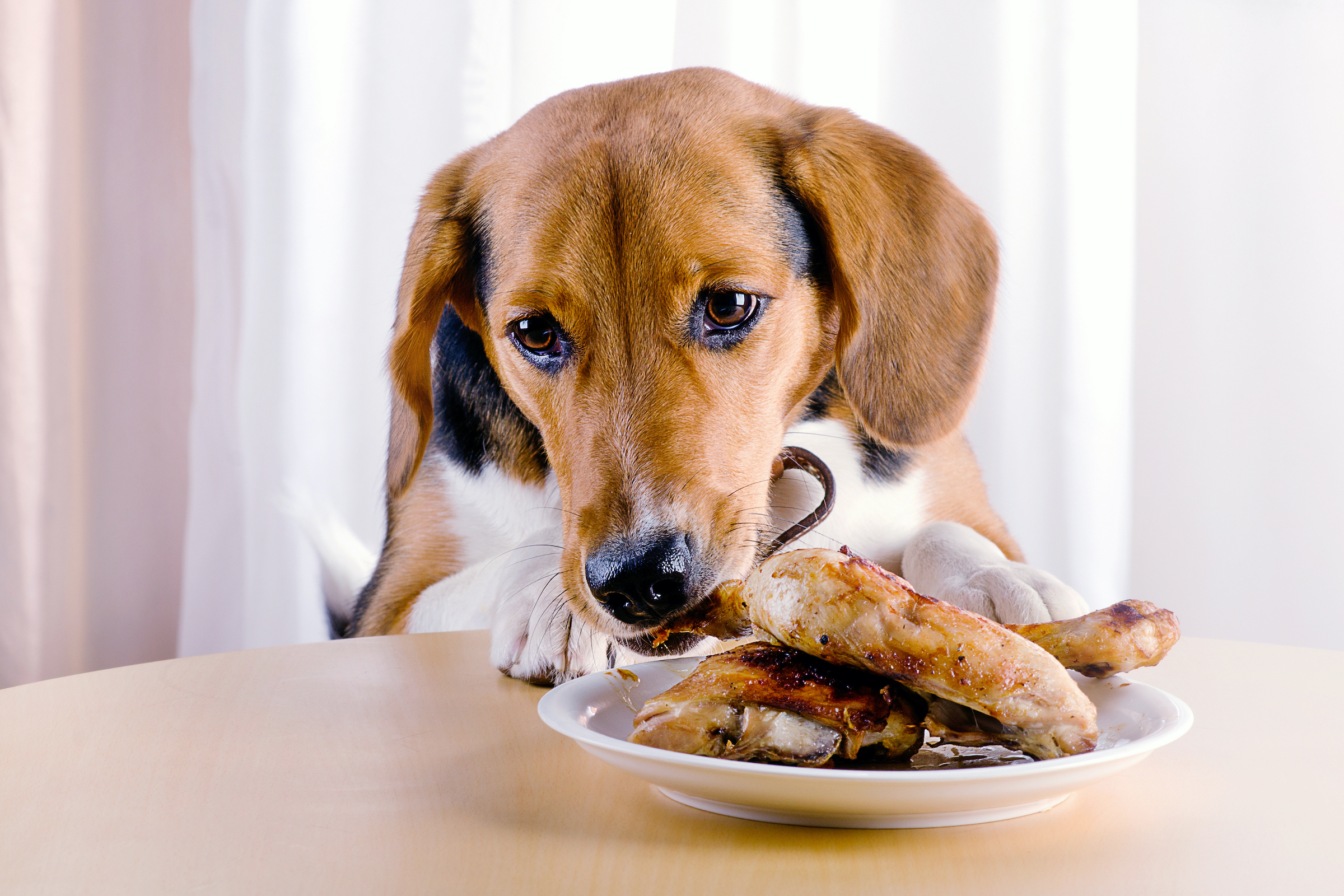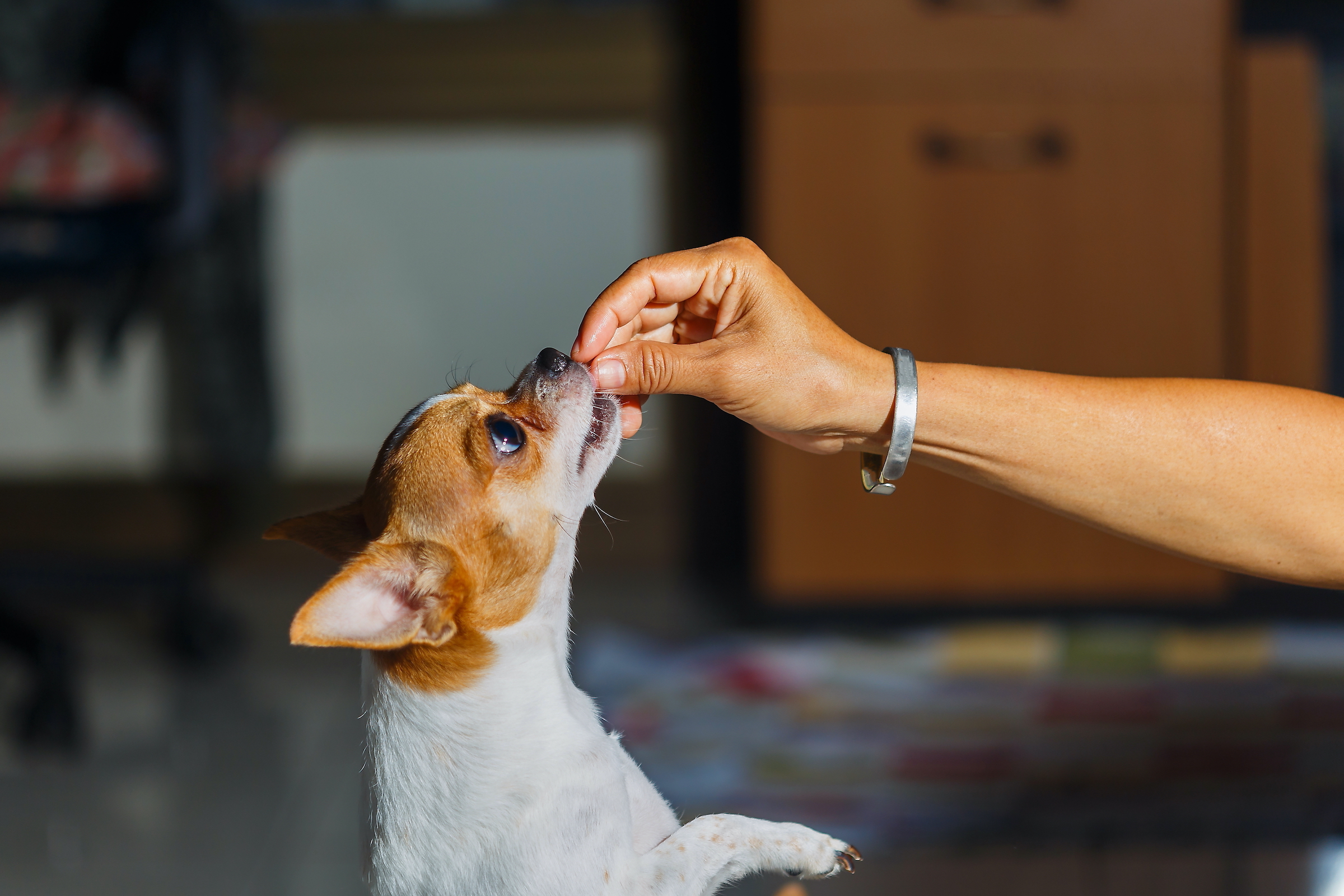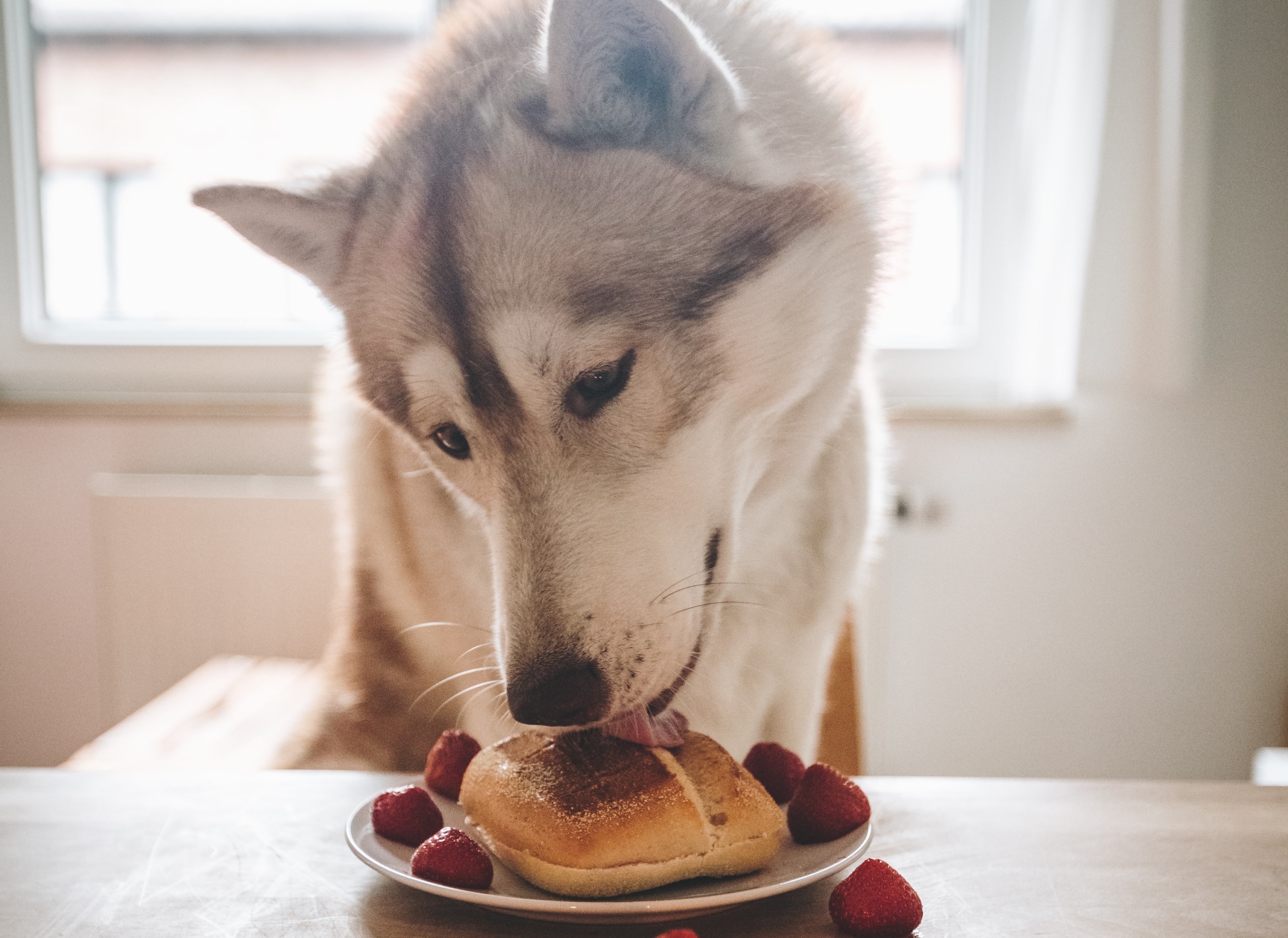Have you ever shared a bite of your sandwich with your beloved pup? Or peeled the crust off your toast to give Fido a morning snack? Don’t worry! Almost every puppy parent has given their fur baby a bite or two of human food. Not only is bread a favorite staple of the American diet, but it’s also one of the most popular foods worldwide. While we know that grapes, chocolate, and certain nuts are dangerous for dogs, let’s get back to that sandwich. Can you safely feed dogs bread? Let’s find out.

Is it safe to feed my dog bread?
According to the American Kennel Club, the answer is yes, but only as long as you make sure the bread is dog-friendly. If your dog has a balanced, nutritious diet, it’s safe to let them snack on white or wheat bread occasionally. Watch out for any signs of an allergic reaction or an upset stomach afterward, as dogs can have food intolerances just like humans can.
Follow these tips for giving bread to your dog:
- Make sure it’s plain bread. The rise (no pun intended) of specialty bakeries, even in our grocery stores, means that we now enjoy bread in a variety of tastes and textures that may not always be suitable to share with our four-legged friends. Specifically, beware of bread that contains ingredients that are toxic to dogs, such as raisins and macadamia nuts. Breads that contain garlic and xylitol (an artificial sweetener) should also be avoided.
- Snack-sized portions only, please. Too much of a good thing is, in this case, bad for the waistline. Most bread is dense with calories, so make sure you’re staying within the recommended caloric intake for your pet. If you’re unsure what that is, consult your veterinarian.
- Choose wisely. If you’re going to share bread with your dog, make sure it’s as nutritious as possible. Whole-grain breads, such as wheat, contain more nutrients and fiber than their white and French bread counterparts.
- Baked bread only. Bread dough can be dangerous for your dog to ingest. Depending on how much your dog eats, dough can continue rising in his stomach, which may cause bloating and discomfort. Also, bread dough contains ethanol, a by-product of yeast that is highly toxic to dogs.

When shouldn’t I feed bread to dogs?
- Some dogs are allergic to wheat, so you should never feed bread to a dog with a known wheat allergy. But some breads contain ingredients that are potentially toxic to dogs, like cinnamon raisin bread. Even just a couple of raisins can cause kidney issues — and potentially kidney failure — in dogs, so you should never give your dog any foods containing raisins or grapes.
- Another ingredient to keep an eye out for? The artificial sweetener xylitol, which is commonly in nut butters, sweets, and baked goods. Many artificial sweeteners, such as stevia, aspartame, and monk fruit, are generally well-tolerated by dogs, but xylitol can be toxic even in small amounts.
- Breads that contain fatty nuts should also be avoided, as the high-fat content may cause an upset stomach and diarrhea, and they can even cause pancreatitis if your dog eats nuts in large quantities.
- Keep an eye out for onions — including scallions and shallots — as well as garlic. While the pungent aromas might have your dog begging for a bite, both are toxic to dogs and should never be given to your pooch.
Can I give my dog bread if they need a bland diet?
If your dog has an upset stomach, the Merck Veterinary Manual advises feeding them a bland diet. That doesn’t necessarily mean bread is your best bet. Plain, white rice and boiled chicken or turkey are easily digestible, so they should help your pooch feel better a little sooner.
If your dog has tolerated bread well in the past, a few little bites won’t necessarily hurt an upset stomach. But because of bread’s high glycemic index, it’s not all that helpful, either. Stick to what your veterinarian recommends for your dog’s tummy troubles, but don’t worry too much if you’ve already given them a little bread.

Is bread healthy for dogs?
Not really. Bread is very high in carbohydrates and calories, which means large quantities aren’t good for anyone — human or canine. Even so, there are some situations in which bread can be beneficial.
- To hide medication. If your bread-loving dog isn’t so crazy about taking medication, try hiding his pill in a small bread pocket. To entice him further, add a bit of (xylitol-free) peanut butter.
- When he’s eaten something he shouldn’t. Bread is a great encapsulator, so if your dog accidentally ingests something sharp (like a bone splinter) or a long piece of yarn or string (like from a plush toy he’s destroyed), feed him a piece or two of bread before you call your veterinarian. Often, the bread will encase the foreign object and allow it to pass safely through his gastrointestinal tract.
- To soothe an upset stomach. Bread is also a great sponge, so eating a piece or two may help soak up excess stomach acids when your pup is feeling just a bit queasy. Of course, if your dog is vomiting, lethargic, or has diarrhea, consult your veterinarian immediately.
Healthy snack substitutes for bread include fruits and vegetables such as apples, bananas, carrots, and sweet potatoes. In moderation, these foods are high in nutrients and low in calories. Of course, each dog is different, so experiment to see which foods your dog likes and how they affect his digestion.
Bread is generally safe for dogs to eat, but just like it is for humans, it’s nothing but filler. Bread has very little nutritional value and a lot of sugar, so if your dog is overweight, it’s not the best treat you can give them. Make sure your dog eats a nutrient-dense, balanced diet that’s high in protein and fiber instead.
Experts recommend snacks compose no more than 10% of your dog’s total daily calorie intake. The Association for Pet Obesity Prevention says that 54% of U.S. dogs are overweight, a condition that increases your pet’s risk for developing heart disease, osteoarthritis, and cancer.
If you’ve never given your dog bread before, keep an eye on them the first time to make sure they don’t have any tummy troubles after. Bread can cause bloating, gas, and diarrhea in some dogs, especially if they have a sensitive stomach. But if your dog tolerates bread well, a little piece every now and then won’t hurt them.
Editors' Recommendations
- 5 surefire ways to keep your dog off your bed and get a good night’s sleep
- Are ‘dog years’ really 7 human years? How to calculate your dog’s age
- Taking your dog’s collar off at night: Safe move or safety risk?
- Why does my dog have a bald patch on their tail? Here are the answers you need
- How to tell if your older dog’s health decline means the end is near





